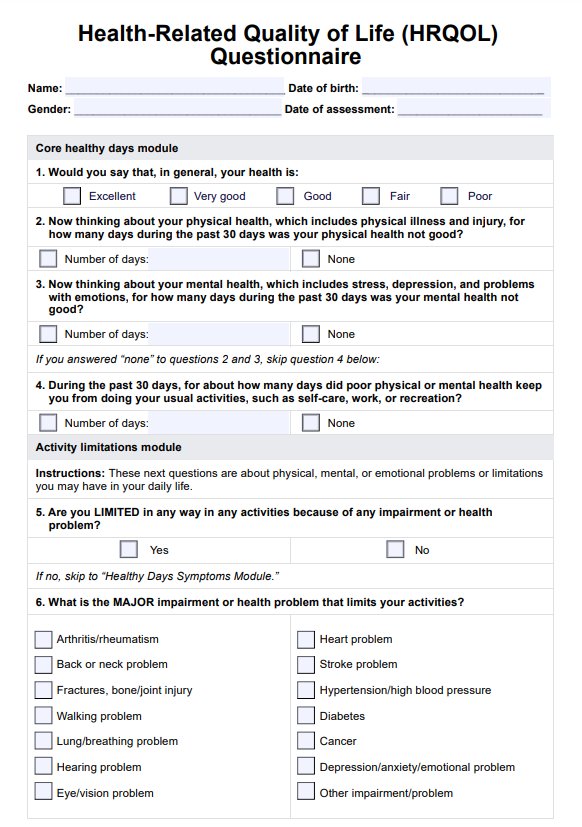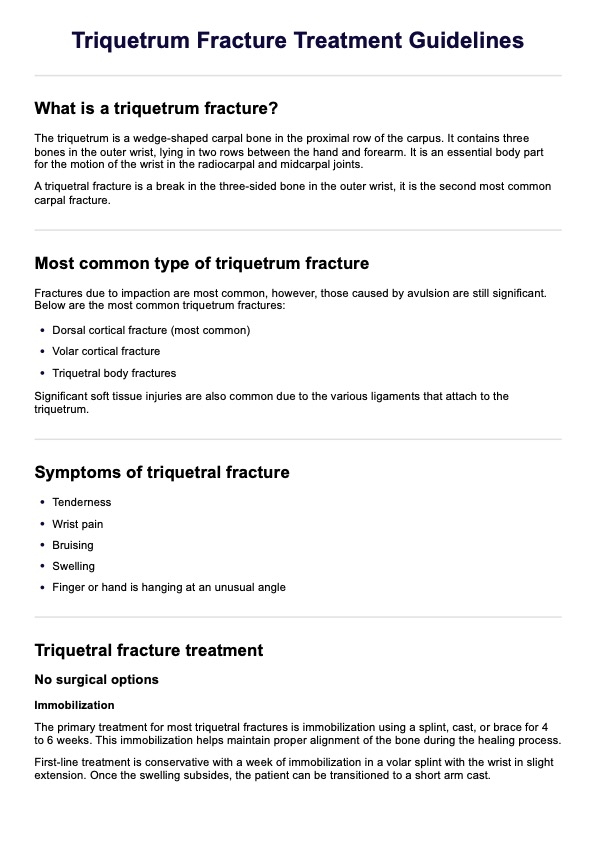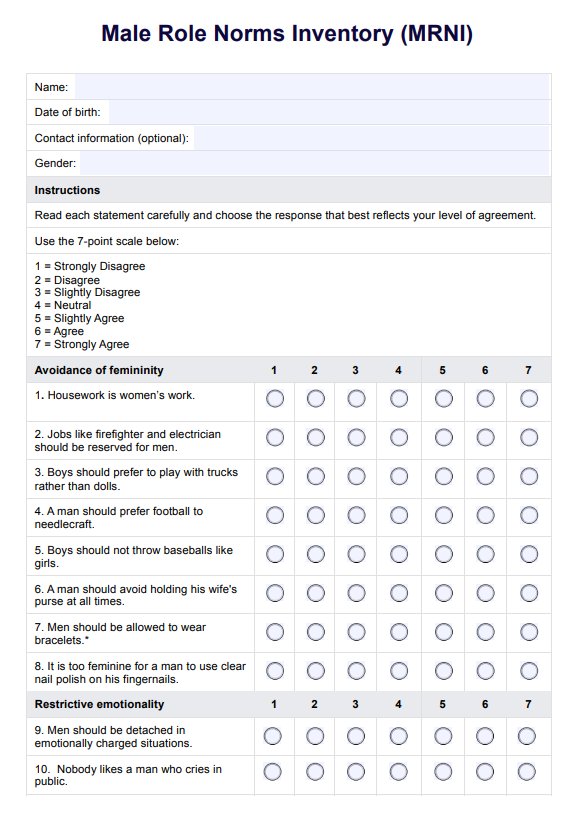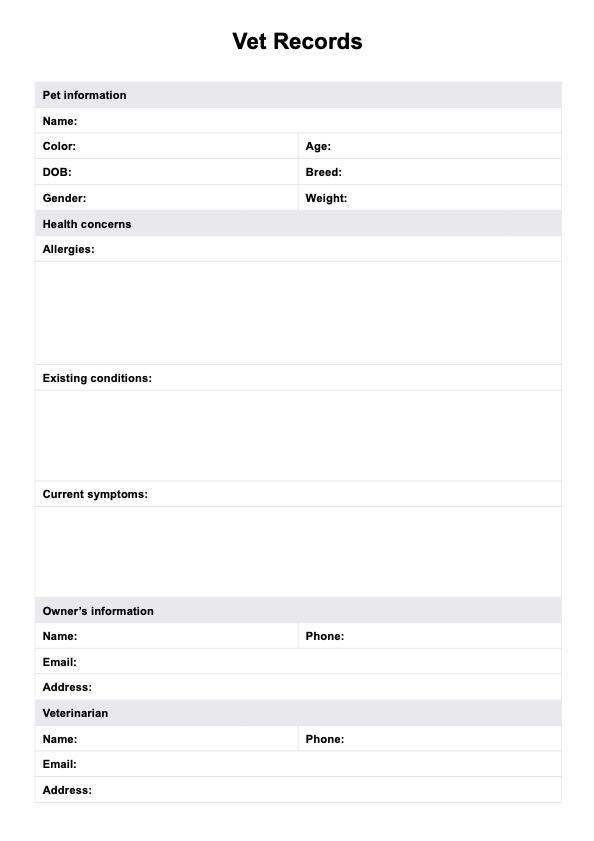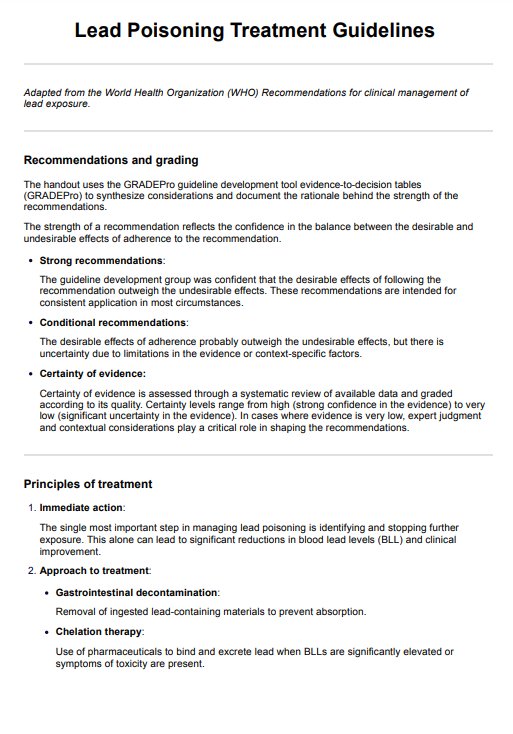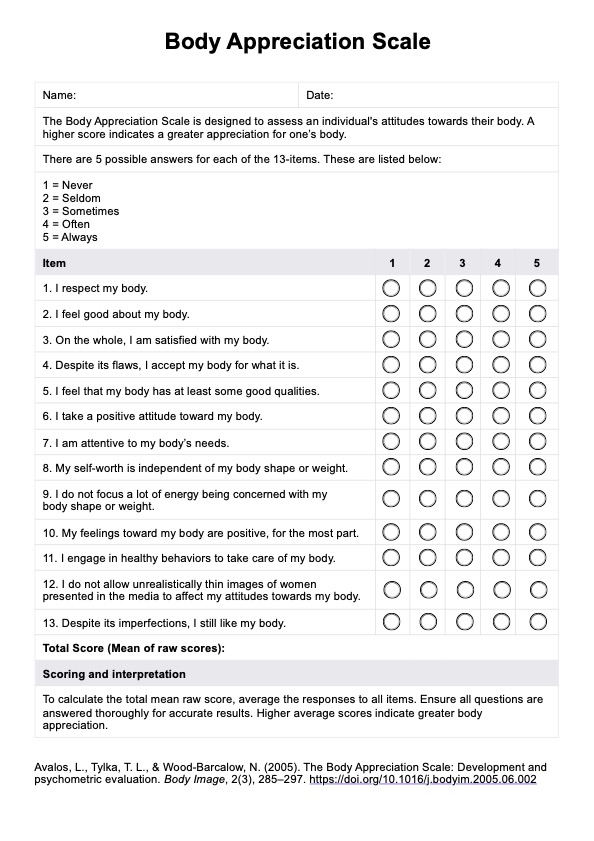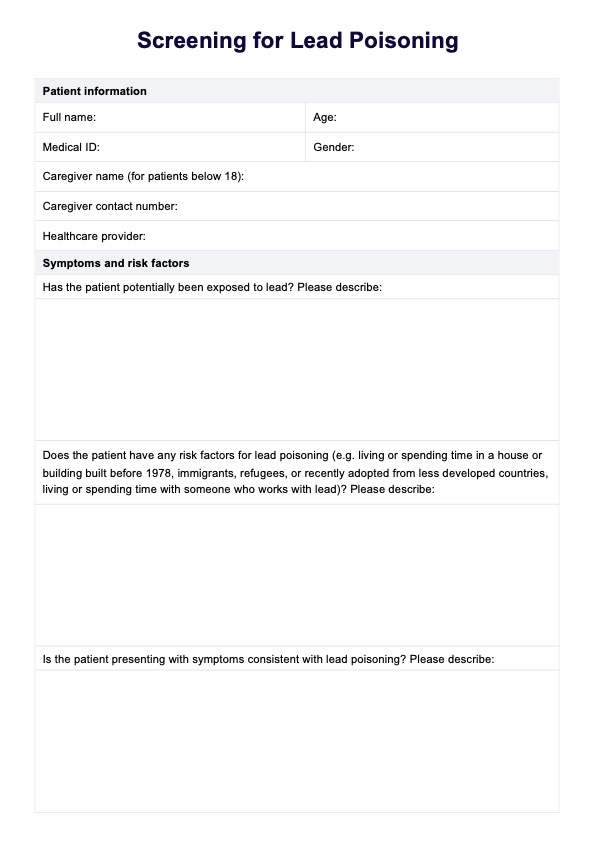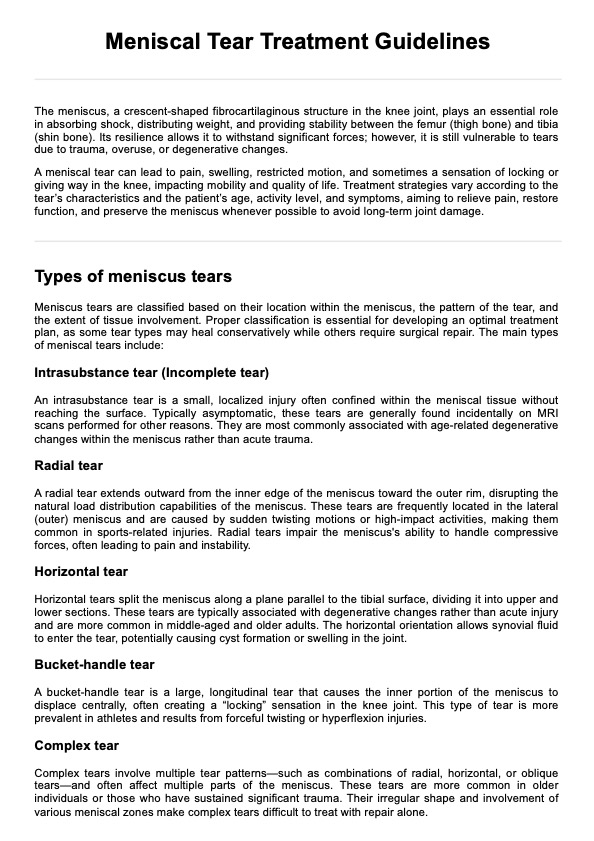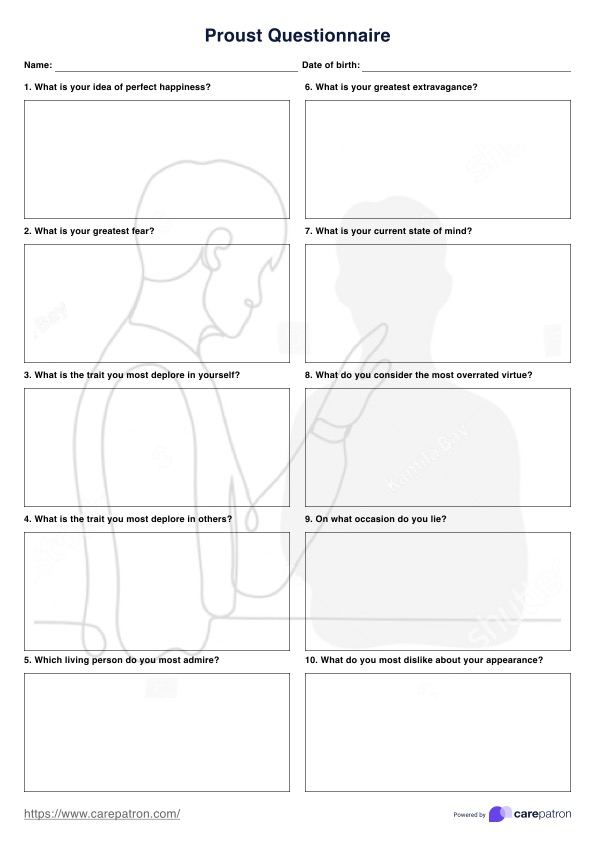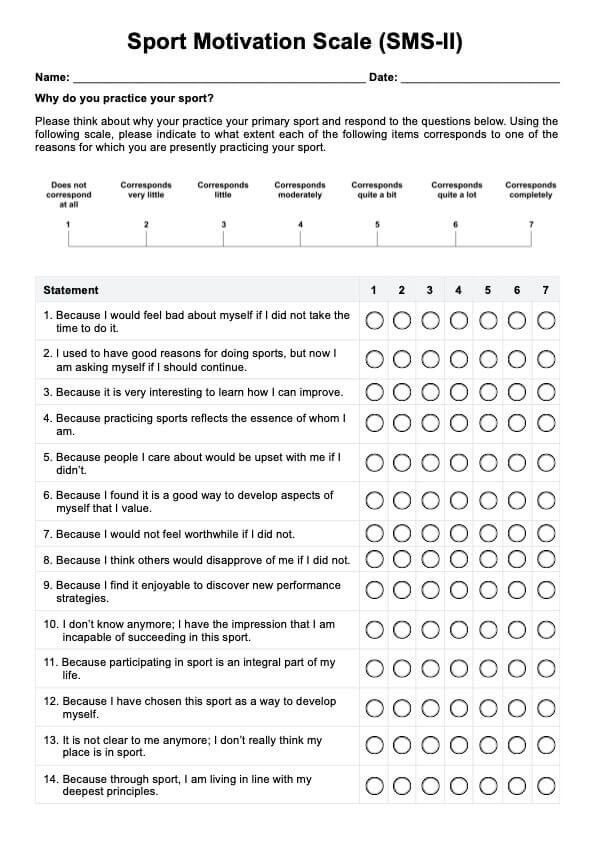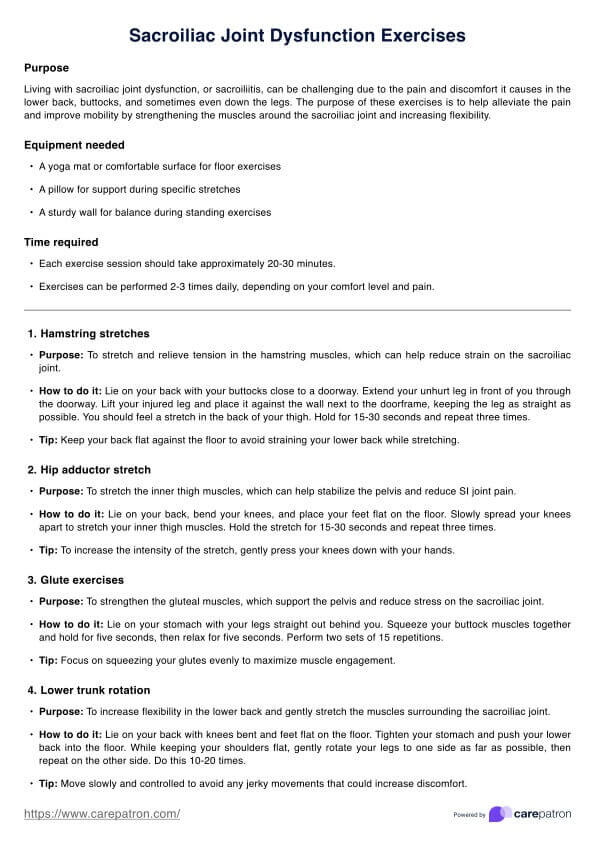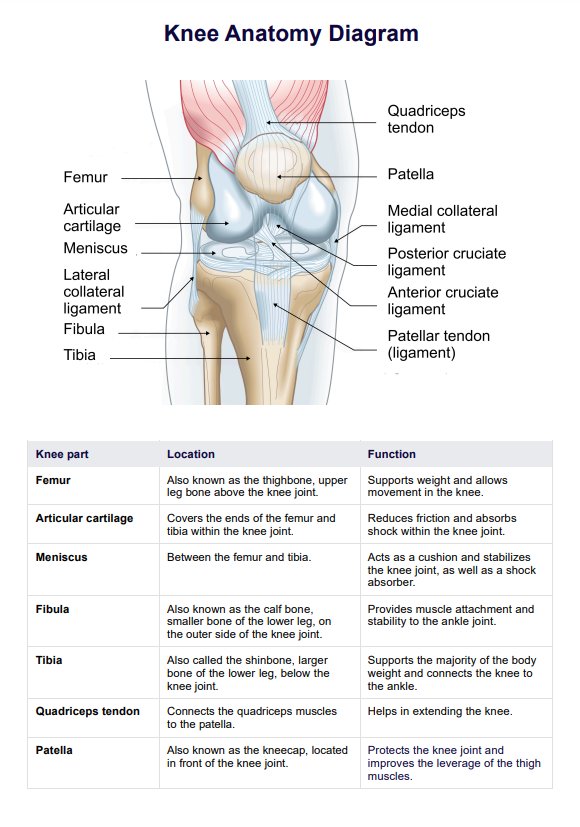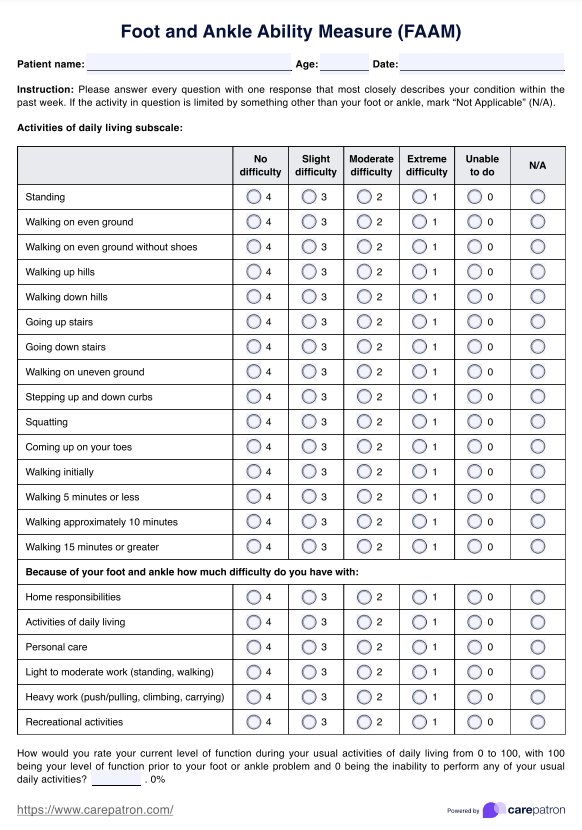Morel Lavallee Lesion Treatment Handout
Enhance your patient care with our Morel-Lavallée Lesion Treatment Handout. Clear, concise, and comprehensive treatment guidance for healthcare professionals.


What is a Morel-Lavallée lesion?
A Morel-Lavallée lesion is a closed degloving injury that occurs when the skin and underlying fascia separate, accumulating blood, lymph, and fat in the space created. This injury typically results from high-energy trauma, such as a road traffic accident, a fall from a significant height, or sports injuries.
Morel-Lavallée lesions often occur in areas subject to shearing forces, with the proximal lateral thigh being a common site due to its susceptibility during high-energy impacts. Surgical site infections can complicate the healing process of these lesions, particularly following procedures involving the pelvis and acetabulum.
Magnetic resonance imaging (MRI) serves as the gold standard for diagnosing Morel-Lavallée lesions. MRI provides detailed images of soft tissue injuries, helping to identify the extent of fluid collection and to differentiate these lesions from other types of soft tissue injuries such as hematomas or abscesses.
Causes and complications
The primary cause of a Morel-Lavallée lesion is high-impact trauma that shears the skin and subcutaneous tissue away from the underlying superficial fascia itself. Common scenarios include motor vehicle accidents, falls, and contact sports injuries. If not properly treated, complications can include infection, chronic pain, and persistent swelling.
In some cases, the lesion can become encapsulated, forming a persistent cyst-like structure that may require surgical intervention.
Classifications
Morel-Lavallée lesions are classified based on their location, size, and duration since the injury occurred. Acute lesions are identified and treated soon after the trauma, while chronic lesions have persisted for a longer period and may have developed secondary complications such as fibrosis or infection.
Morel Lavallee Lesion Treatment Handout Template
Morel Lavallee Lesion Treatment Handout Example
How to manage and treat a Morel-Lavallée lesion
Management and treatment of a Morel-Lavallée lesion depend on the severity and specific characteristics of the injury. Early diagnosis and appropriate intervention are crucial to prevent complications such as infection or chronic pain. Treatment can be divided into conservative and surgical approaches.
Conservative treatment
Conservative treatment methods are often the first line of defense in managing a Morel-Lavallée lesion. These non-invasive treatments focus on reducing symptoms and promoting natural healing processes.
Compression dressings
Compression dressings reduce swelling and support injured tissues. A compression bandage should be applied to the affected area, ensuring it is snug but not too tight to avoid cutting off circulation. This compression bandaging helps reduce fluid accumulation and supports the injured area. The dressing should be re-applied as needed, typically once or twice a day.
Elevation
Elevating the affected limb above the heart level can help reduce swelling by encouraging fluid drainage. Whenever possible, pillows or cushions can be used to maintain the elevated position. Regular elevation is beneficial in minimizing swelling and promoting healing.
Rest
Rest is essential for allowing the soft tissue around the injury to heal naturally without additional strain. Patients should avoid putting weight or stress on the affected area and limit movements and activities that could aggravate the injury. This helps reduce pain and facilitate recovery.
Medications
Prescribed anti-inflammatory drugs or pain relievers can help manage pain and reduce local inflammation. Patients must follow the dosage instructions carefully as prescribed by their healthcare provider. These medications play a crucial role in managing symptoms and promoting comfort.
Surgical treatment
In cases where conservative treatments are insufficient, surgical interventions may be necessary to manage a Morel-Lavallée lesion effectively. These procedures aim to remove accumulated fluid, prevent reaccumulation, and promote proper healing of the affected area.
Aspiration
Aspiration involves using a sterile needle and syringe to remove accumulated fluid from the lesion. A healthcare provider performs this procedure, and it may need to be repeated if the fluid reaccumulates. By removing excess fluid, aspiration helps reduce swelling and discomfort.
Drainage
In persistent fluid accumulation cases, a surgical drain may be inserted to continuously remove fluid. This requires careful post-surgery care, including keeping the drain clean and dry. Continuous drainage helps prevent fluid reaccumulation and reduces pressure on the affected area.
Debridement
Debridement is the first surgical technique for removing dead or infected tissue. This procedure is essential in preventing infection and promoting healing by removing damaged tissue. Post-operative care includes following wound care instructions and taking prescribed medications.
Sclerotherapy
Sclerotherapy involves injecting a sclerosing agent into the lesion to close off the space where fluid is accumulating. This procedure helps prevent further fluid accumulation. Patients must follow their provider’s instructions for post-procedure care to ensure successful outcomes.
How to use our Morel Lavallee Lesion Treatment Handout?
This handout is designed to provide comprehensive information and instructions for treating patients with Morel Lavallee lesions. Healthcare professionals can use this guide to educate patients about their condition and treatment options.
Step 1: Review patient information and diagnosis
Start by confirming the diagnosis of the Morel Lavallee lesion through a physical examination and appropriate imaging studies such as ultrasound, MRI, or CT scans. This will help in assessing fluid accumulation and tissue separation.
Step 2: Explain the condition to the patient
The initial sections of the handout should explain a Morel Lavallee lesion, including its symptoms and causes. This will help the patient understand the nature of their injury and the importance of adhering to the treatment plan.
Step 3: Select the appropriate treatment options
Determine whether conservative or surgical treatment is best for the patient. Refer to the “Treatment Options for Morel Lavallee Lesion” section in the handout to guide your decision. Discuss the selected treatment plan with the patient, ensuring they understand the goals and benefits of each option.
Step 4: Emphasize post-treatment care and prevention
Highlight the importance of post-treatment care to ensure proper healing and prevent complications. Instruct the patient on wound care, monitor for signs of infection, and gradually resume normal activities. Additionally, it provides tips for preventing future injuries, such as wearing protective gear and conditioning muscles.
How will healthcare professionals benefit from this handout?
Providing a comprehensive and easy-to-understand treatment handout for patients with Morel-Lavallée lesions can significantly enhance the quality of care and streamline the treatment process. Here are three key benefits healthcare professionals can gain from using this handout:
Improved patient education
By using this handout, healthcare professionals can ensure that patients receive clear and concise information about their condition and treatment options. This improves patient understanding and compliance with treatment protocols, leading to better outcomes.
Enhanced treatment efficiency
The handout serves as a standardized guide for conservative and surgical treatment options, making it easier for healthcare providers to communicate and implement treatment plans. This reduces the time spent explaining procedures and allows for more efficient patient management.
Consistent follow-up care
Providing patients with detailed post-treatment care instructions helps maintain consistency in follow-up care. This ensures that patients are well-informed about wound care, activity restrictions, and signs of complications, which can prevent further issues and promote faster recovery.
Commonly asked questions
A Morel-Lavallée lesion is a closed degloving injury where the skin and underlying tissues separate, accumulating fluid. It typically results from high-impact trauma.
The diagnosis of a chronic lesion is made through physical examination and imaging studies, such as ultrasound, MRI, or CT scans, to detect fluid accumulation and tissue separation.
Treatment includes conservative methods like compression, elevation, rest, and medications and surgical options like aspiration, drainage, debridement, and sclerotherapy.
One significant complication is postoperative surgical site infection, which can occur if the lesion is not managed appropriately. Additionally, if the lesion is not adequately treated, it can lead to chronic pain, prolonged swelling, and further soft tissue injury, complicating the patient's recovery.












